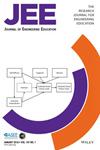Systematic review of spatial abilities and virtual reality: The role of interaction
Abstract
Background
The importance of spatial abilities for individuals' success in science, technology, engineering, and mathematics (STEM) domains has been well established. Researchers have also emphasized the need to train engineering students in spatial ability. Although virtual reality (VR) offers prospects for training spatial abilities, research on the design of VR training environments remains incomplete.
Purpose
This review aimed to reveal the link between individuals' interactions in a VR environment and their spatial abilities and provide guidance for future research and the design of training settings. We also aimed to support students by aligning their interactions with individuals' spatial abilities or by using interactive VR to foster these abilities to create more equal opportunities in the field of engineering.
Method
A systematic review of existing literature was conducted to categorize and discuss recent findings.
Results
The study found that the reviewed literature (i) mainly considered mental rotation; (ii) showed advantages for high-spatial-ability learners and disadvantages for low-spatial-ability learners when they use interactive VR; (iii) indicated training possibilities, especially for low-spatial-ability learners, when they use interactive VR; and (iv) showed changes in not only interaction but also visualization parameters between experimental and control groups.
Conclusion
Interactive VR can be used to develop spatial abilities, particularly in low-ability learners. However, it can also hinder these learners and favor high-ability learners. Further research focusing on the interactive part of VR and the role of spatial ability is required to support design choices.


 求助内容:
求助内容: 应助结果提醒方式:
应助结果提醒方式:


